Everyone’s talking about Chernobyl (or Chornobyl, if we’re being proper) because of the recently aired HBO drama based within it. I’m always looking for an excuse to show off my holiday pictures, and at the time it’s 3 years (to the day) that I was in Chernobyl. So, let’s get in to it!
After a drive down from Kiev (or Kyiv), we arrived at the 30km exclusion zone. We stopped off here to have our documentation examined, and take a few photos.
There were a couple of other tourist groups here, but generally the checkpoint was pretty quiet. More recently I’ve seen photos of the same checkpoint with queues of cars so far as the eye can see. I daresay the HBO drama will increase the numbers of tourists heading to the zone even more.
Checkpoint completed, we began our drive in to the zone proper. Our tour guide, Nikolai, joked about the radiation outside; when the cast of Top Gear had visited the zone years and years ago, they had made sure that all windows were completely shut, and that their vehicles were recirculating air rather than drawing it from outside. Nikolai assured us that this is absolutely not necessary. We were going to be walking around in it soon enough, so why worry? That said, there were some areas where more precautions should be taken (such as the Red Forest).
Our first stop in the zone was one of the numerous vehicle graveyards. Here we were given our bright yellow dosimeters, and instructed to keep them about our persons at all times. If the alarm went off, back away. Me being me, mine ceased in functioning within 5 minutes of getting it, and the backup also did not work. I spent my time in the zone guessing at where I should/should not go.
A lot of the vehicle graveyard had already been stripped. In the years after the accident, looting was rife. The guards could easily be bribed to allow people to drag out objects. The scale of this went somewhat unnoticed until radiation alarms started to go off in Kiev, and people looked to the source of their mechanics. Although the vehicle graveyards are famous for containing interesting machines, they are quite stripped. That said, we found a truck full of jet propulsion systems.
This truck set off our dosimeters, and being the first day we were still cagey about radiation. As you will learn, we quickly became complacent with this.
A lot of the more interesting seeming vehicles in this site were inaccessible to us on this first day by virtue of relatively low radiation levels (the alarms would trill for very little). If I return to the zone I’ll be more confident from the start. After the first day we had done more research, calculated risks associated with exposure to X radiation over Y time and found that even when the dosimeters said no, we could still say yes.
From the vehicle graveyard, we head towards Pripyat (or Pryp’yat’). En route, we stopped off at a small residential schoolhouse.
There’s something very creepy about the abandoned dolls of Chernobyl. As expected, the schoolhouse contained numerous examples.
As with much of the accessible areas of the zone, this site had been looted. Some remnants of the past did still exist. Books containing faces, with text I cannot read.
I did not touch any of this. At this point, I was nervous of the radioactive dust which covered it. Although we were visiting Chernobyl in the summer and the sun was out in full force, we wore long-sleeved clothes. This was to protect our skin from the dust. Tiny specks of radioactive material may have been contained within the dust. Too tiny to be detectable from more than mere millimeters away, our dosimeters would not have warned us. However, once it’s on your skin, it can deliver that radiation directly to your flesh and you’re none the wiser.
Continuing our journey, we stopped at the Chernobyl Power Plant canteen.
To enter here, you would have to pass radiation checks.
Stand as directed by the guide image, an alarm will sound if you have any radioactive material on you. You will be turned away until you have cleared this material. Our group all passed radiation checks with no issues.
At the time of my visit to Chernobyl, the sarcophagus which now covers the plant was still under construction. In Kiev I’d been disappointed by small portion sizes (side note, very few people in Ukraine seem to be overweight). The meals doled out to men working hard labor all day were much more akin to the sizes I’m used to.
The canteen food did not vary day to day, but I greatly enjoyed it. It consisted of a large bowl of borscht (with sour cream), some form of potato (today, mashed), some form of meat (today, chicken), a salad, some bread, some kompot). Despite being simple, the meal was delicious.
Meal done, we headed outside. Here we saw the first of many of the Chernobyl dogs, begging for scraps.
Although cute, we were instructed to ignore these dogs. Animals suffer heavily in the zone. Their fur traps the radioactive dust, leading to high rates of mutation. In the years after the accident an infamous cull of all wildlife took place. Animals would run through the zone, pick up this radioactive fallout, then run outside of the exclusion zone, spreading contaminants. Still, without further human interventions, animal numbers within the zone have dramatically increased. The dog population ticks along, though sickness appears strife.
Later on in our trip, we saw dogs with weeping wounds and tumours. As the workers of the zone are based around the power plant, an area with relatively high levels of radiation. As this is where people are, it is where the majority of the dogs spend their days. The workers are rotated in and out of the zone to keep their radiation exposure levels below safety thresholds. The dogs do not have such luxuries. Living within the fallout, many of them are doomed to suffer.
Well fed, it was time to head in to the town of Pripyat.
Near this sign was a small hot spot of radiation.
Simply being near the warning sign gave a reading of 6.24 microsieverts per hour. Although this was sufficient to set off the alarms on our dosimeters, it is rationally not that great an amount. To give some perspective, you will be exposed to roughly 10 microsieverts per day in regular life, or 3,600 roughly per year. The maximum allowable yearly occupational dose stands at 50,000, and the level associated with some increase in cancer risk stands at 100,000. Lethal radiation sickness is at around the 2,000,000 mark. So, spending a few minutes stood next to a 6.24 μS/h hotspot? Not that bad.
The town of Pripyat was designed not only to house the families of power plant workers, but to be a flagship of the Soviet Union. It featured many amenities and luxuries, designed to laud how good life could be within the Union. A town of just under 50,000 populace (with the average resident aged 26), it featured 10 gyms, numerous schools, a state of the art hospital, and a year-round funfair. By all accounts, it was a luxurious place to live.
We spent some time in the town, wandering through various buildings of interest. I quite enjoyed the department store.
Above the stores were office spaces, which were quite atmospheric.
The building featured an elevator shaft, which for obvious reasons I did not want to get too close to.
Some areas of the building are being reclaimed by nature, with trees springing up behind broken windows.
Again, anything of much worth has already been looted.
Adorning the outside of this building is various bits of graffiti. I couldn’t say when it was painted, but it was generally unsettling.
Nearby to here was an old theatre. I regret not bringing a more powerfull flashlight, the rafters were still filled with the original fixings, but too dark to see much of.
The store rooms of the feature were filled with portraits of Soviet figureheads. The accident took place days before the scheduled May Day parades.
From here, we moved on to one of the many leisure centers.
The huge windows lining the gymnasium are long gone, but despite this only one tree has begun to grow in here.
From the balcony of this building we were able to see the infamous Ferris wheel, which was to be our next destination.
It seems that if you want to create any media surrounding Chernobyl, you need to include this site and its neighboring bumper cars.
I’ve seen videos online of people climbing up this wheel, but unfortunately we did not have any equipment with us (and technically I don’t believe climbing within the zone is allowed). Perhaps something for a return trip!
The nearby bumper cars are quite overgrown. In movies the cars tend to be dotted around the area surrounding the wheel, or a lot clearer than in real life.
From here we moved on to another leisure center, home of the equally iconic diving board touting pool.
With some effort we were able to climb up on to this diving board, gaining a view over the full pool.
Interestingly, this pool remained in use even after the accident. Known as the Azure Swimming Pool, it was in use by the liquidators (the Chernobyl clean-up team) until 1998. The pool is considered to be one of the cleanest areas in the zone. Adjacent to the pool is an indoor basketball court which also remained in use for some time after the accident.
Our final stop in Pripyat before heading to Chernobyl for the night was the roof of one of the tower blocks. Climbing many flights of stairs, our tour guide pointed out a trail of blood running down the stairs. A man was bored and lagging behind his tour group, and for reasons unknown had decided to smash a window. He’d put cloth around his fist but evidently not enough, because he lacerated himself pretty well and started to bleed out rapidly. Instead of going upwards to try and find his group, he headed down. This decision ultimately saved his life, as he ran in to another tour group which contained someone with medical training. Nikolai was very happy that this had happened, as a death in the zone can lead to massive disruptions for tour operators.
Although I have not seen the HBO show, it feels safe to assume that this view is in it. Much like the Ferris wheel, this shot always gets used.
In the distance you can see the reactor building (or nowadays, mainly the sarcophagus).
We would not visit this until tomorrow. For now, it was time to head to Chernobyl for the night.
As when entering the canteen, we had to undergo radiation checks to enter the town. I completed mine whilst wearing the remains of a Silent Hill nurse costume (perhaps a story for another time).
Prior to heading to our hotel for the night, we had some time to explore. There is a small shop in Chernobyl which we visited.
Mainly patroned by the builders working on the sarcophagus, it sells food and creature comforts; alcohol, cigarettes, magazines. Entire cooked chickens. A small amount of tourist merchandise is also available. I purchased a fridge magnet, and an obnoxiously bright yellow t-shirt which I wear to this day.
Our shopping done, we headed out to explore the town area. As with other populated areas of the zone, dogs were a ubiquitous sight.
As I’ve mentioned, patting the dogs of Chernobyl is generally not advised. However, there does seem to be one major exception- Tarzan.
Tarzan is a long-term resident of the zone, and is well known for his friendliness. He followed our group as we explored, demanding attention frequently. Born some time in 2017, he is still alive at the time of writing (June 2019), having been sighted in the Chernobyl town recently. He seems to flit between the town and the Duga radar, and is a common sight for visitors to the zone.
The town of Chernobyl was once much larger than is maintained nowadays. Large amounts of the housing has been reclaimed by the surrounding woodlands.
Some people have chosen to resume living in the zone. Their homes can be easily identified through the presence of repairs to the structures.
Many of the houses are now collapsing. We shone torches in, but did not enter. Our guide was keen to advise against entering, as the houses crumble more by the day.
Our walk around Chernobyl took us to the edge of the neighboring lake. Here we could see the remains of the river boats.
Rusted remains sit alongside newer vessels.
A bridge spans a narrow point in the river, but we elected not to explore much further as nightfall was imminent.
Walking back to our hotel for the night, we passed various murals throughout the town. One particularly striking one featured storks.
Storks feature heavily in the artwork around Chernobyl as they are the national bird of Ukraine.
Walk completed, it was back to the hotel for vodka and dinner. There’s now two hotels in Chernobyl, and we stayed in the more modern one- It even had WiFi!
We wanted to get a good night’s sleep, because day 2 of the trip was going to be very busy!
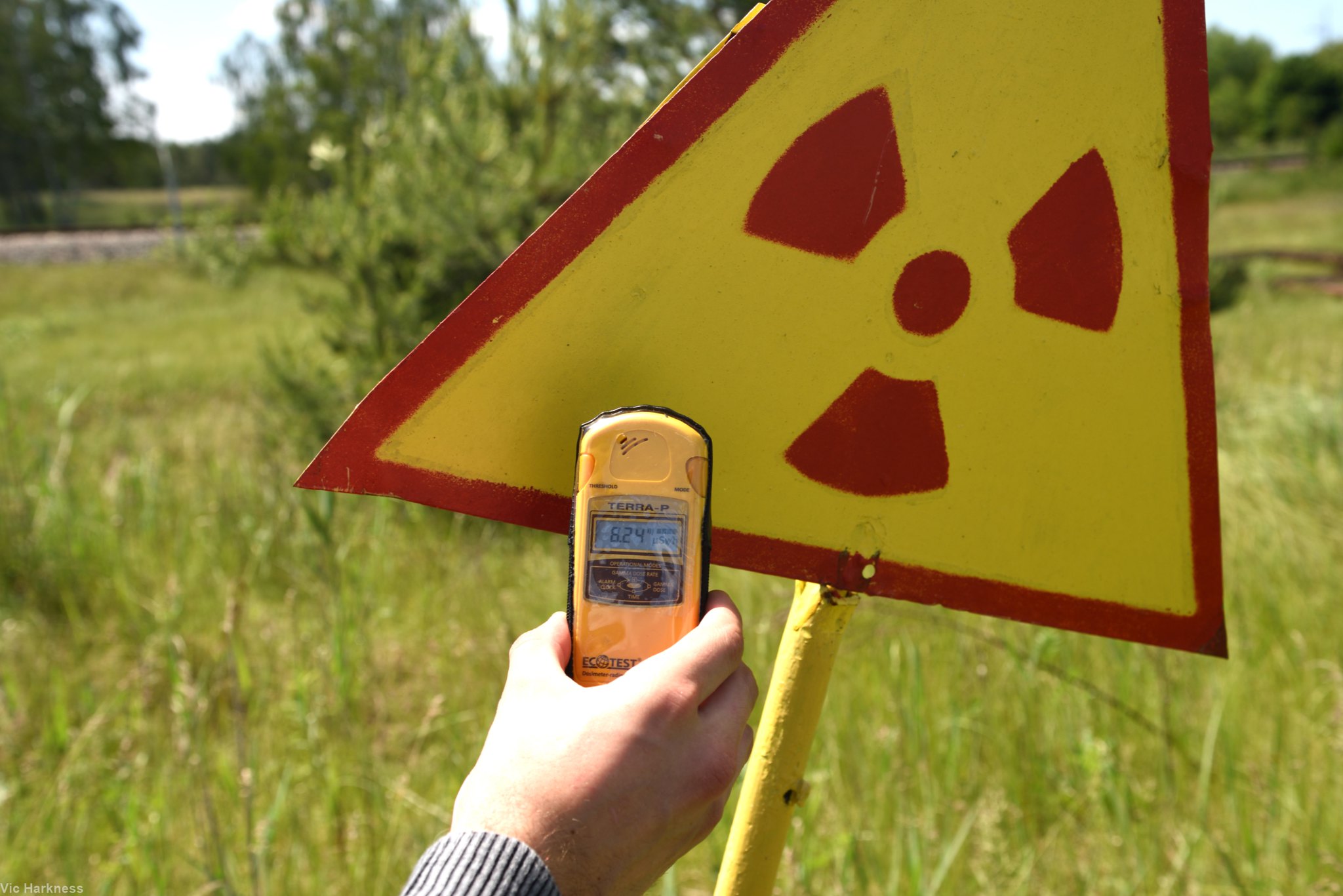
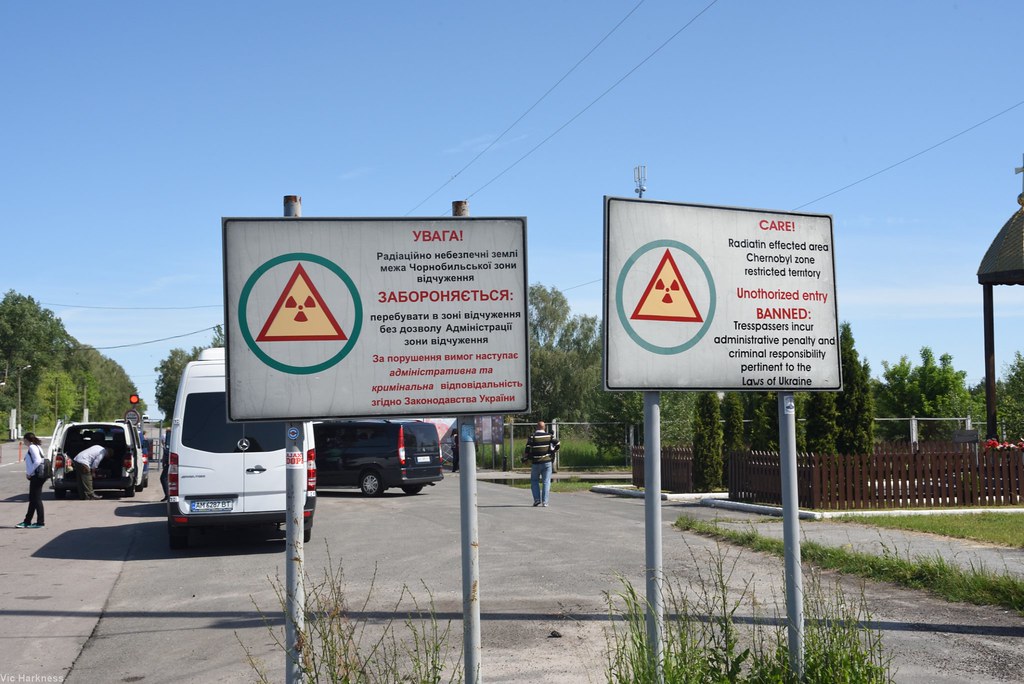
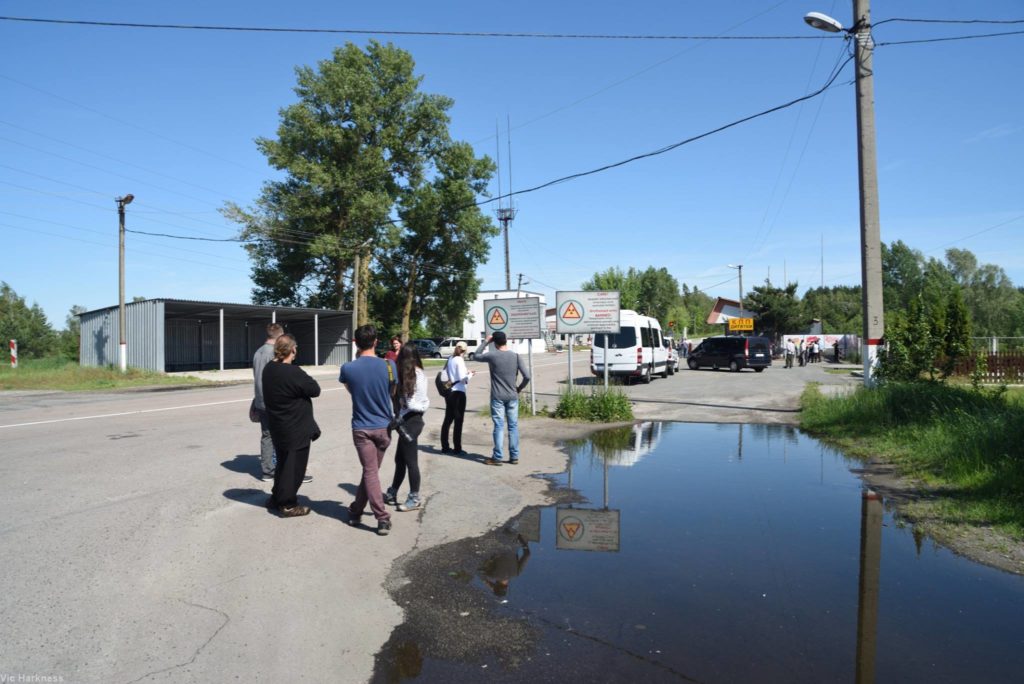
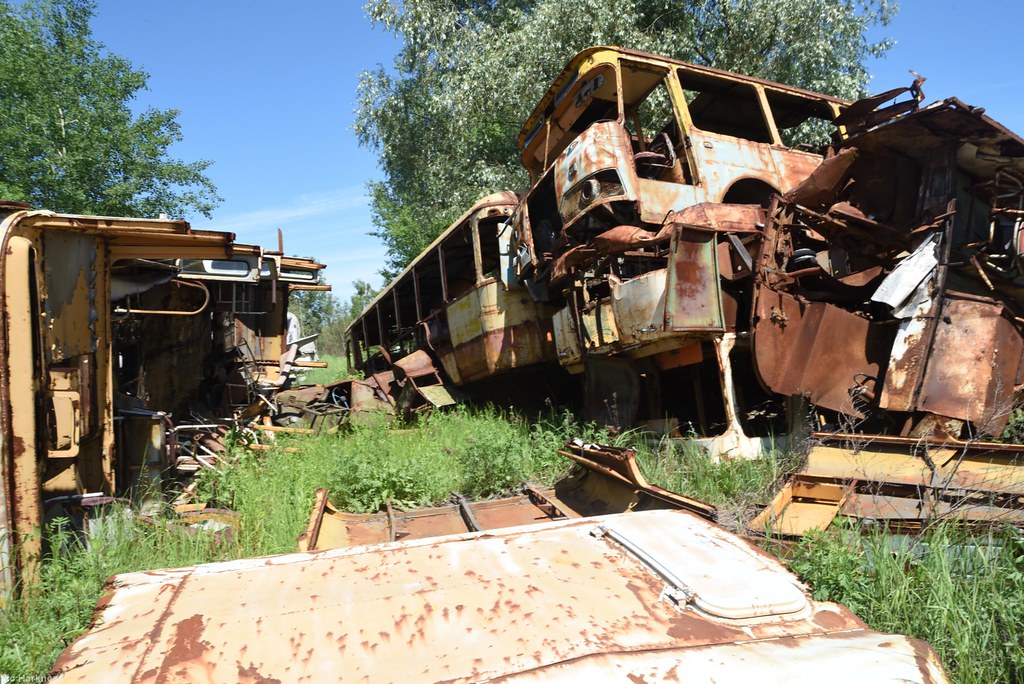
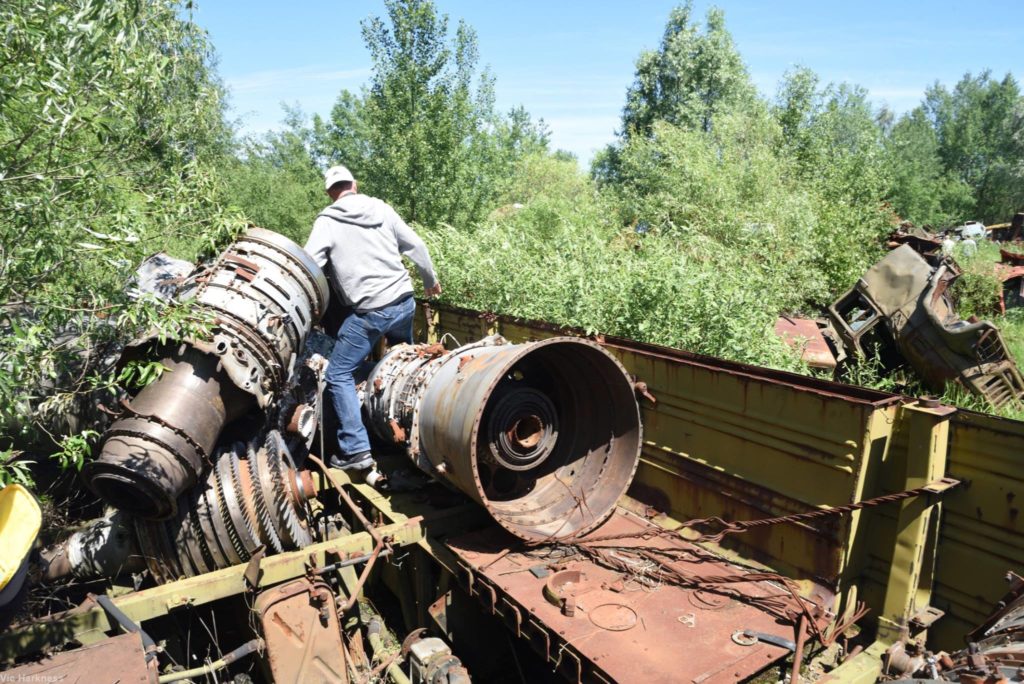

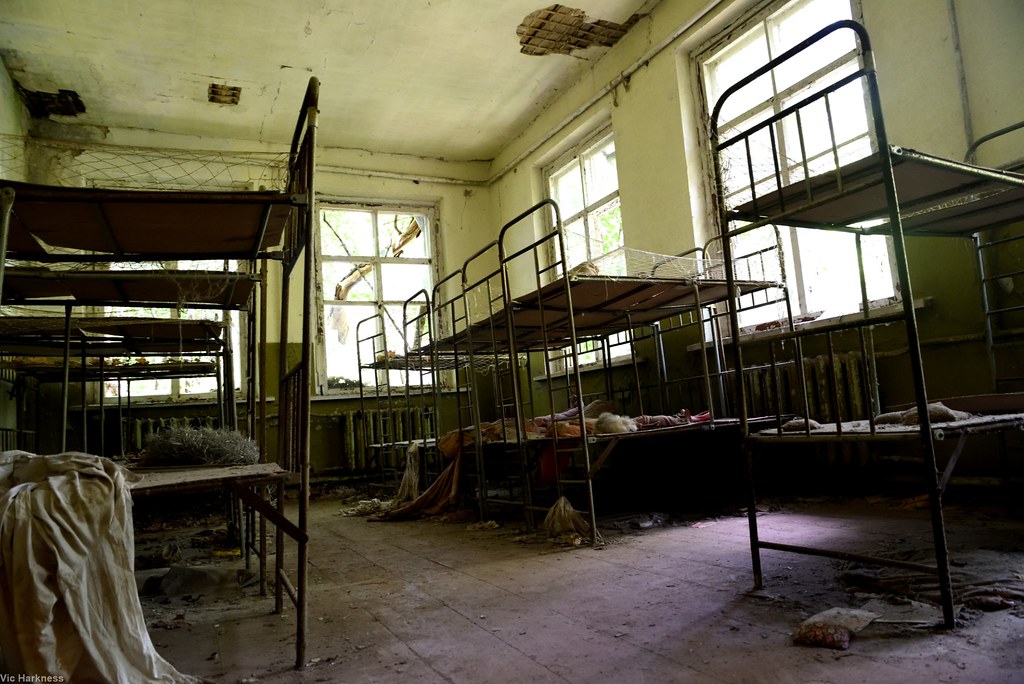

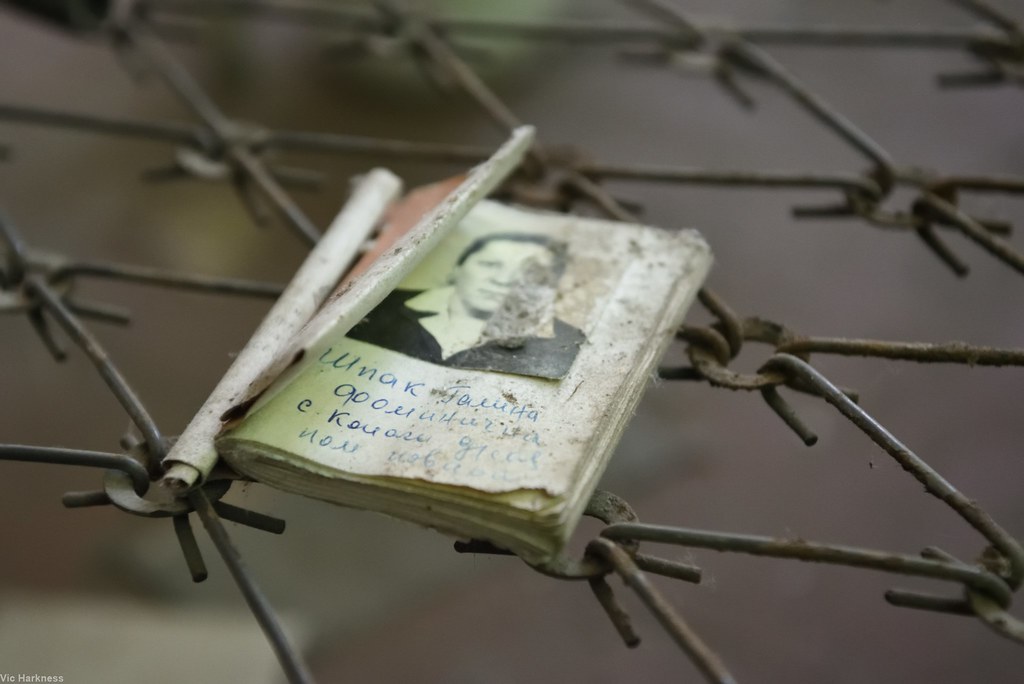



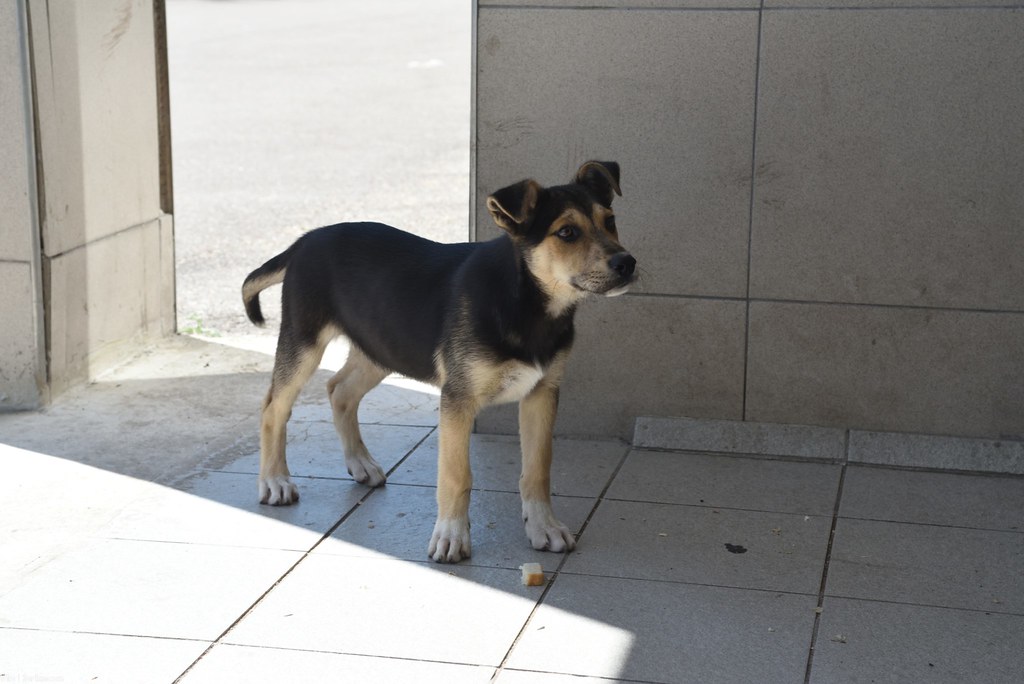





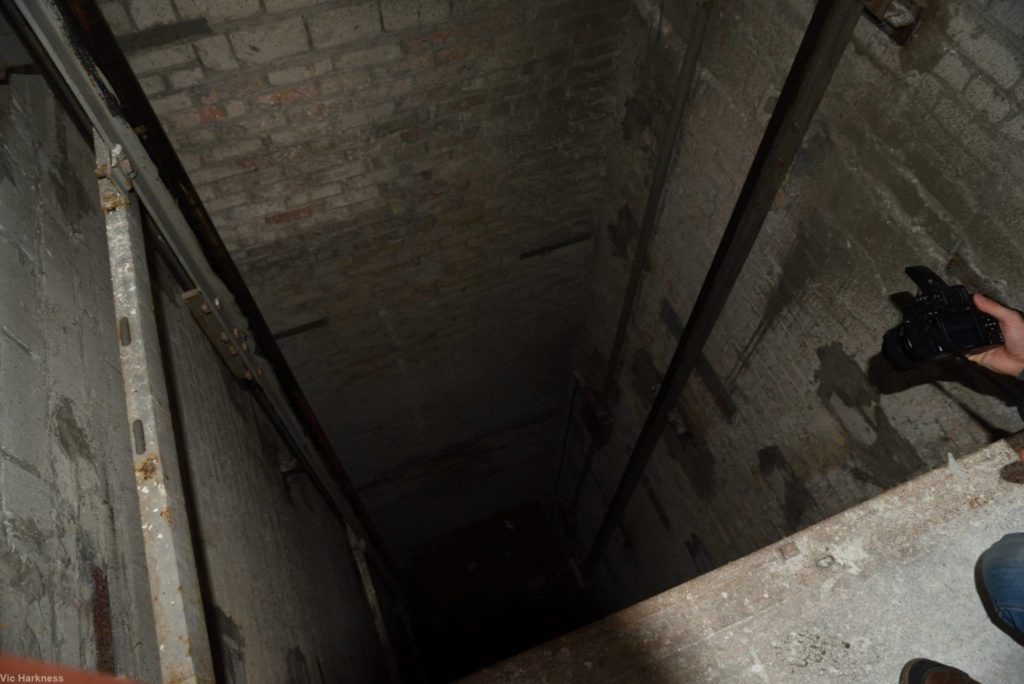

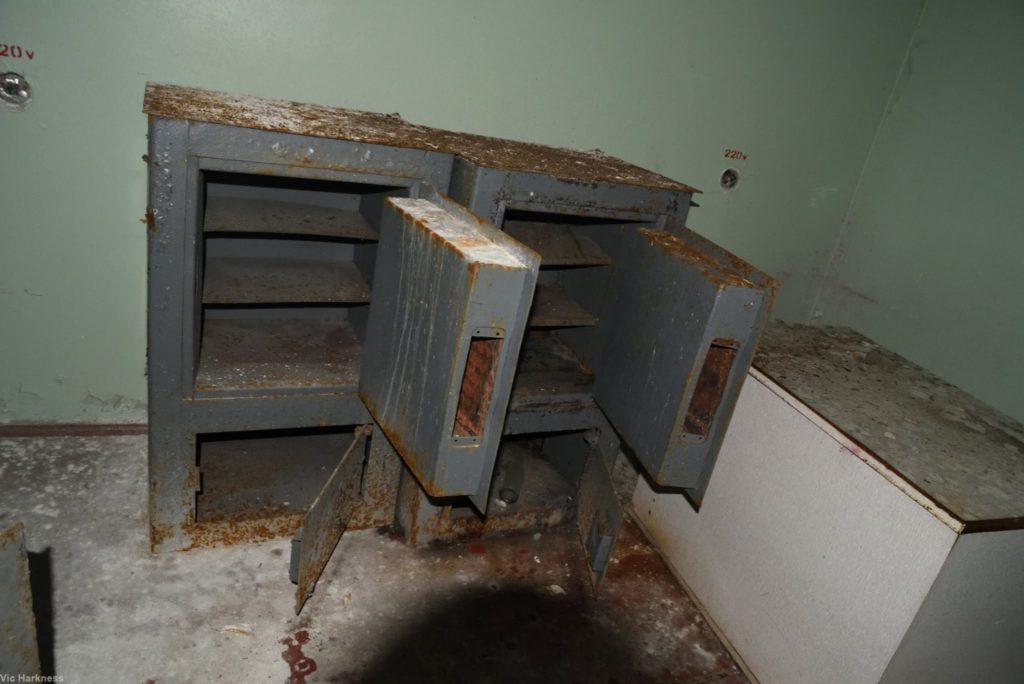
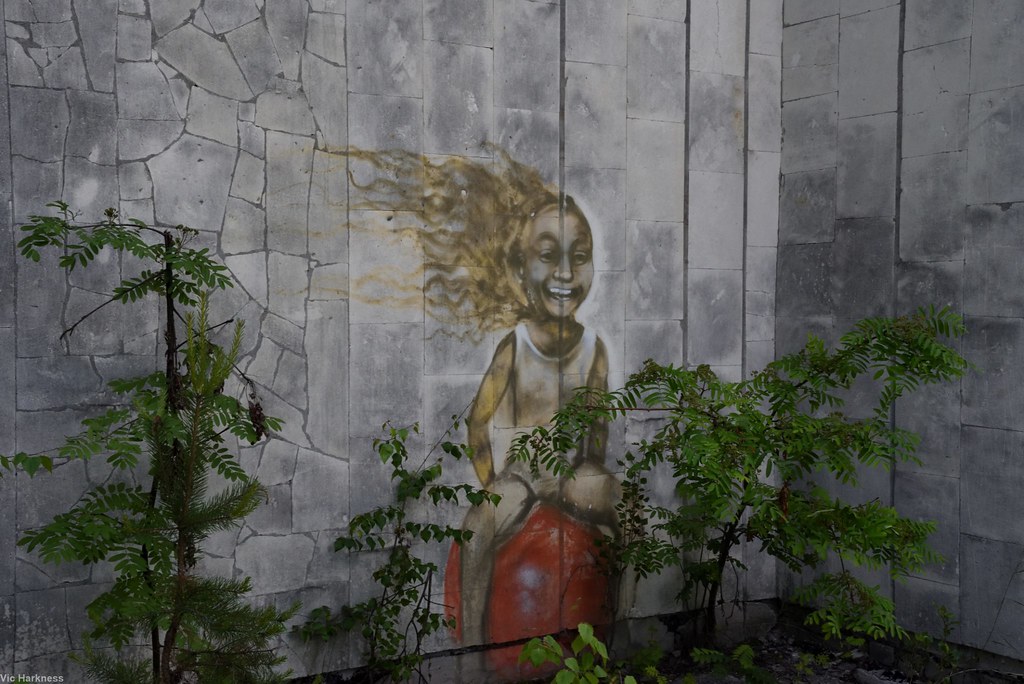
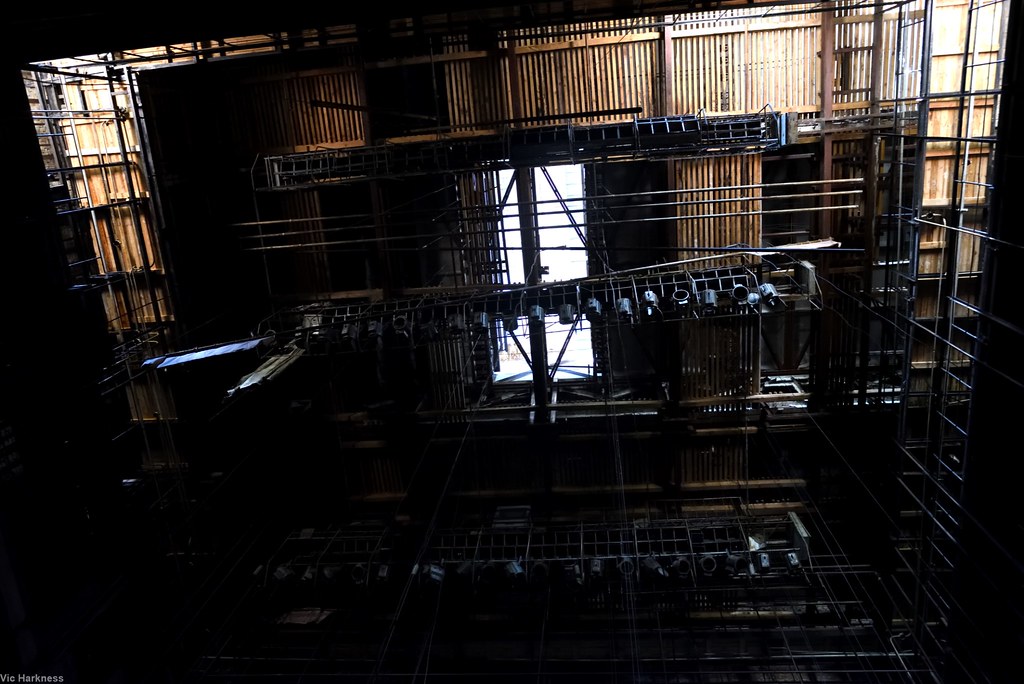
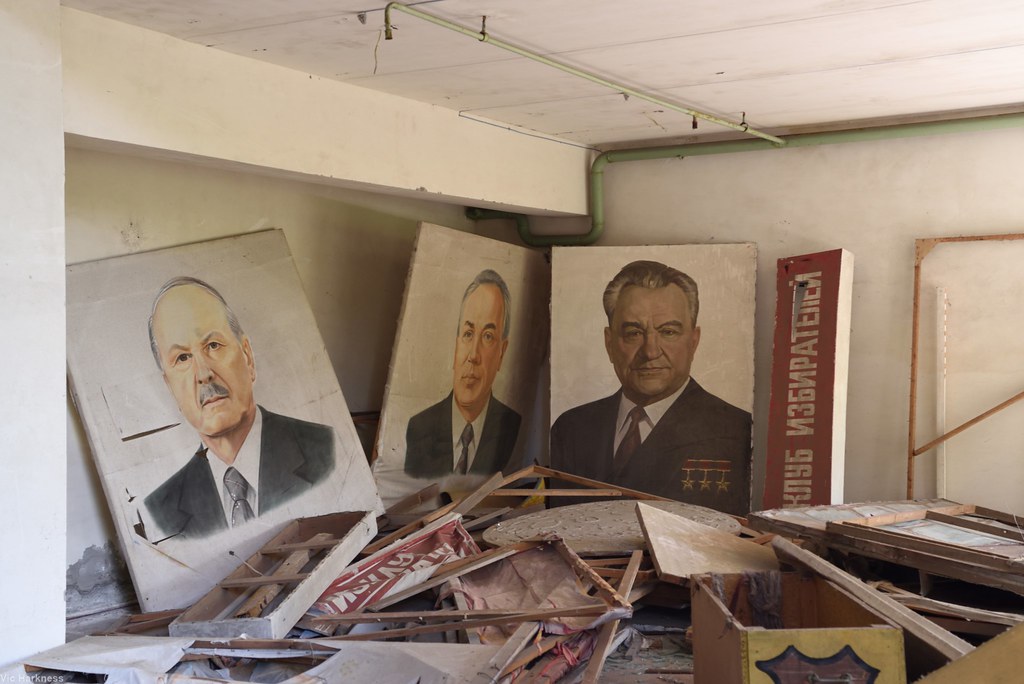
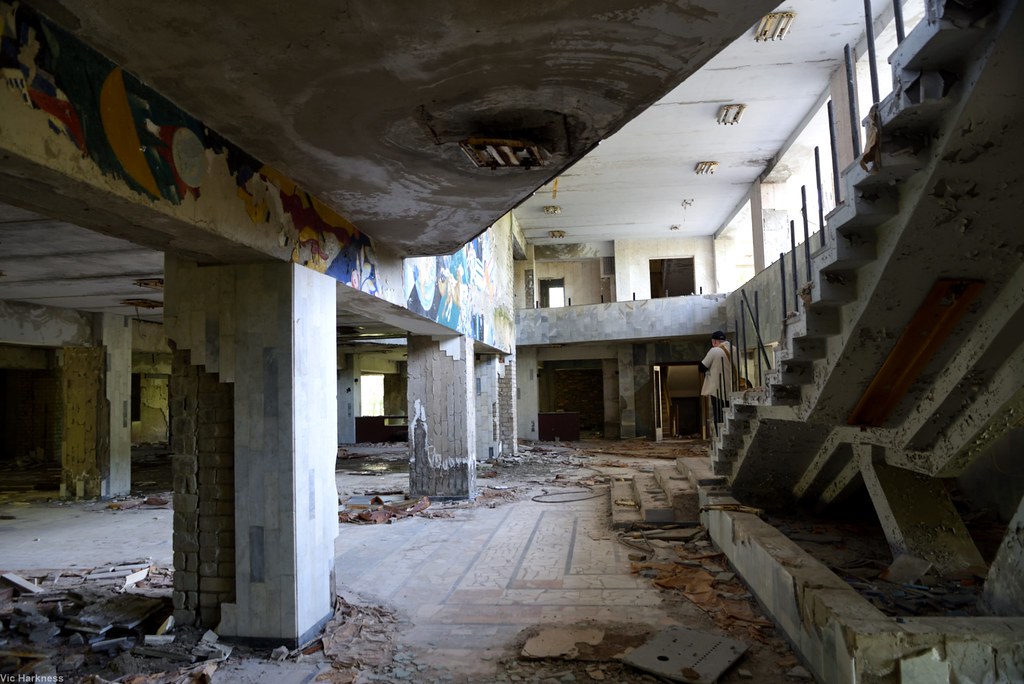
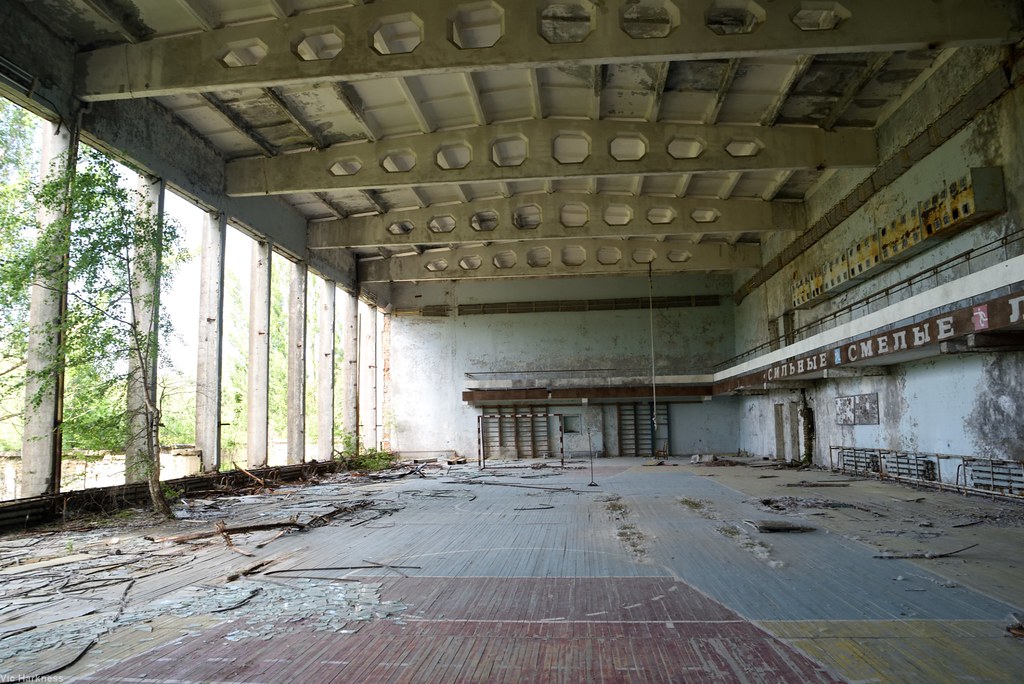



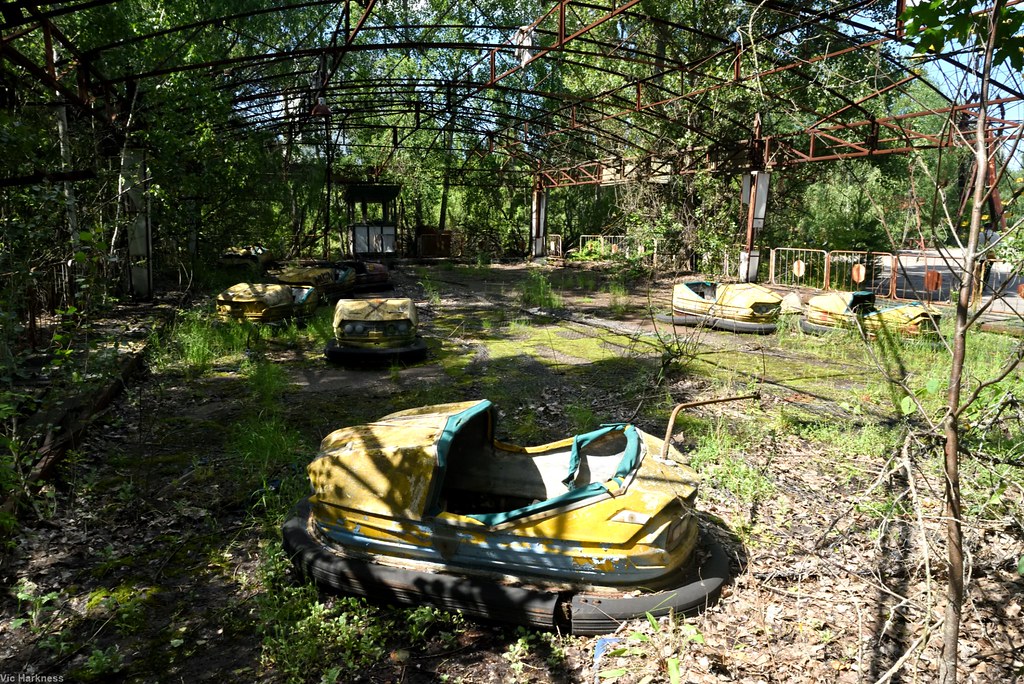





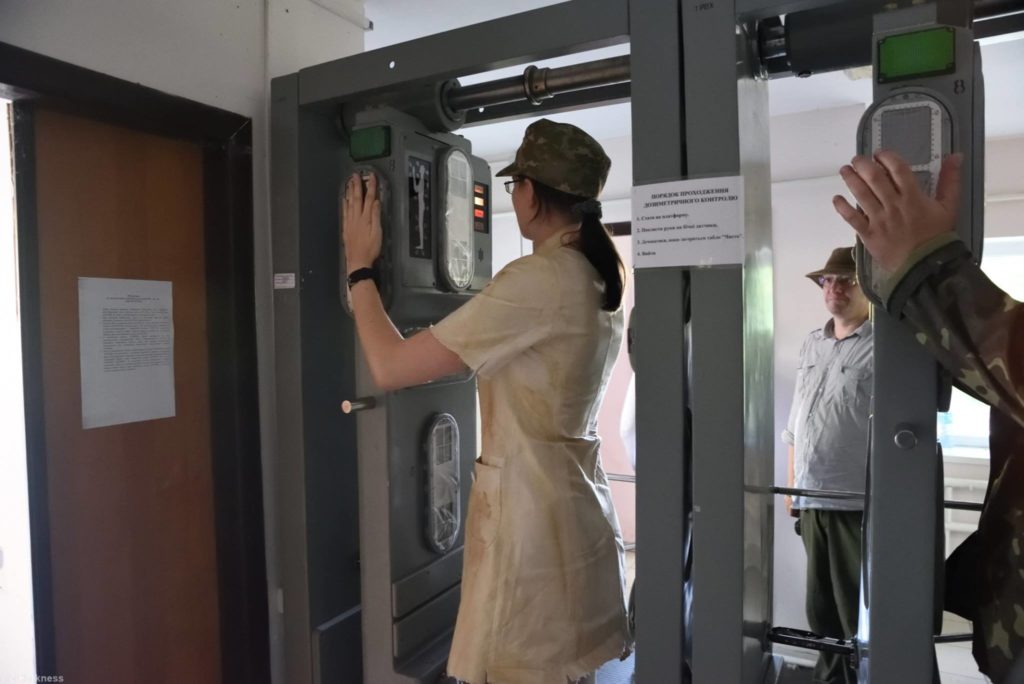
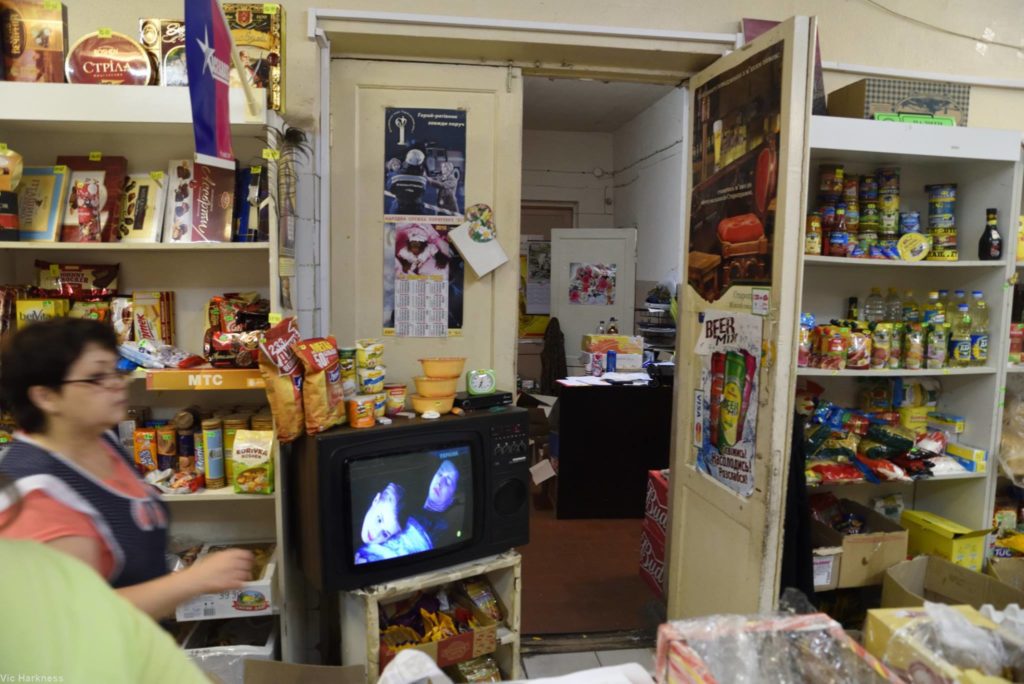
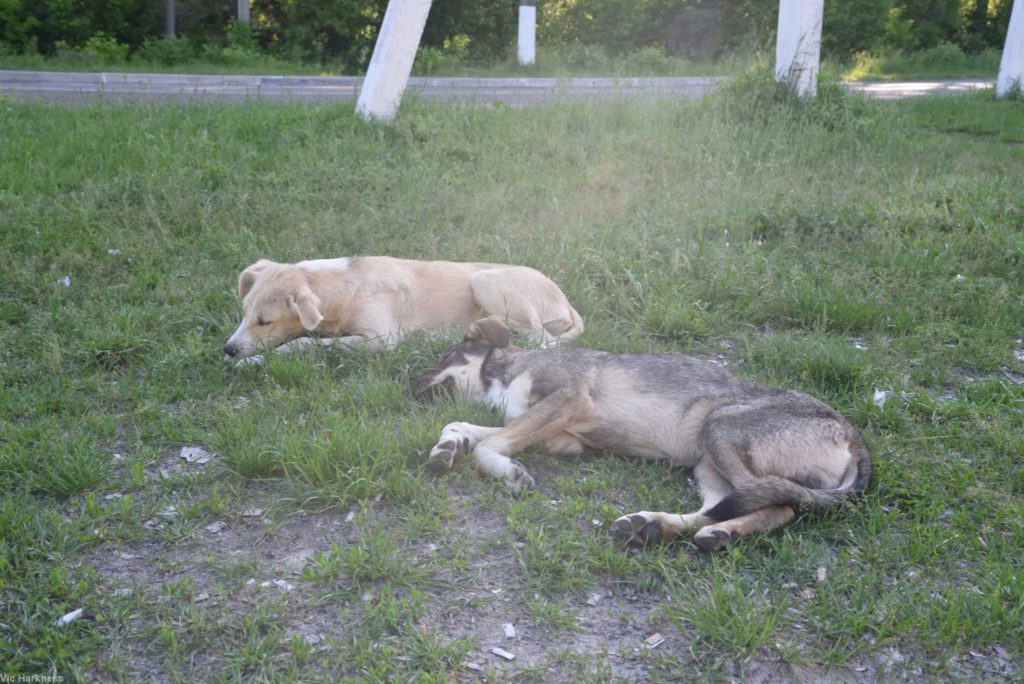
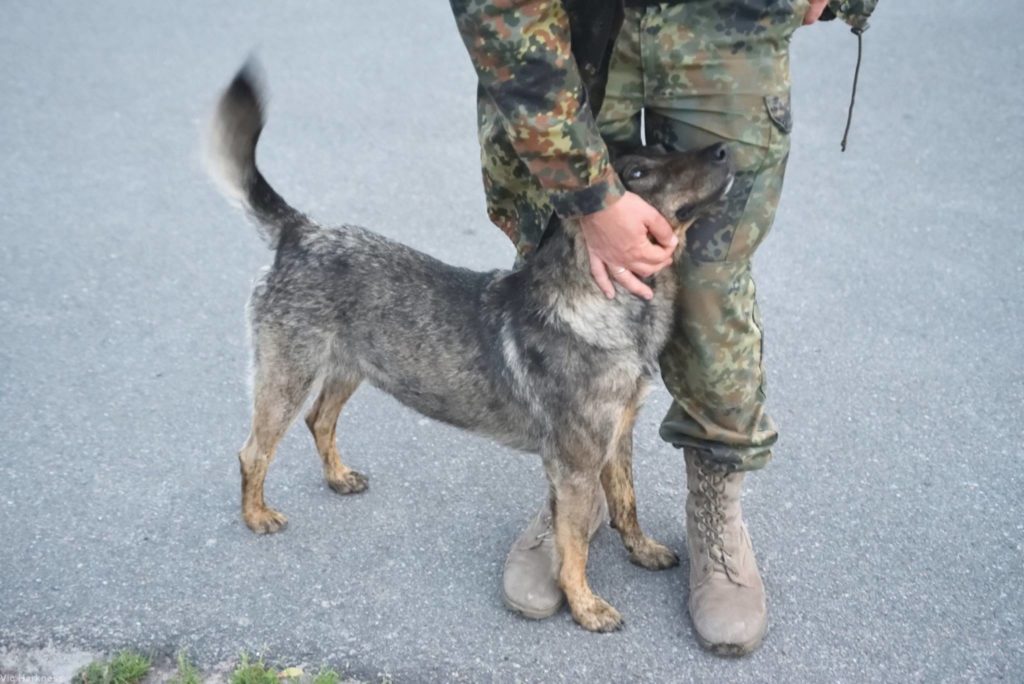




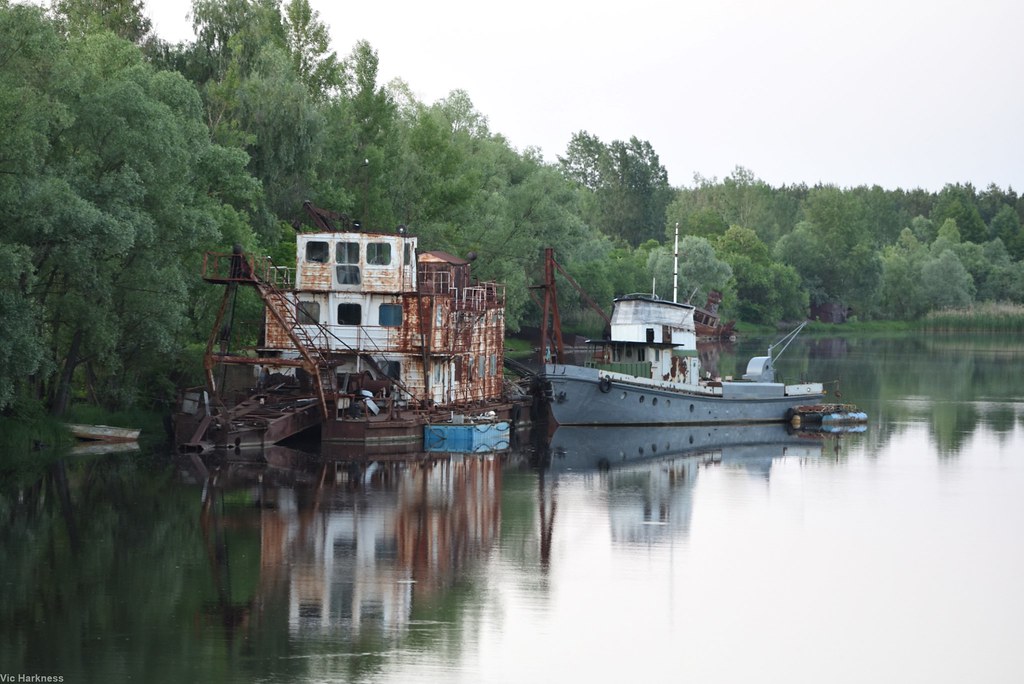
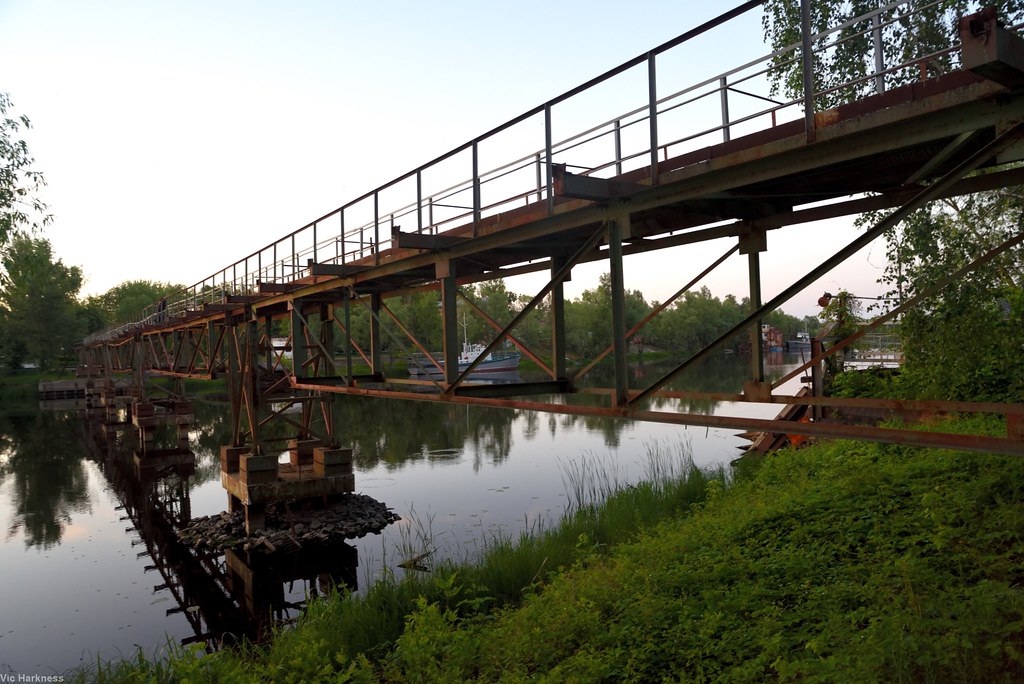

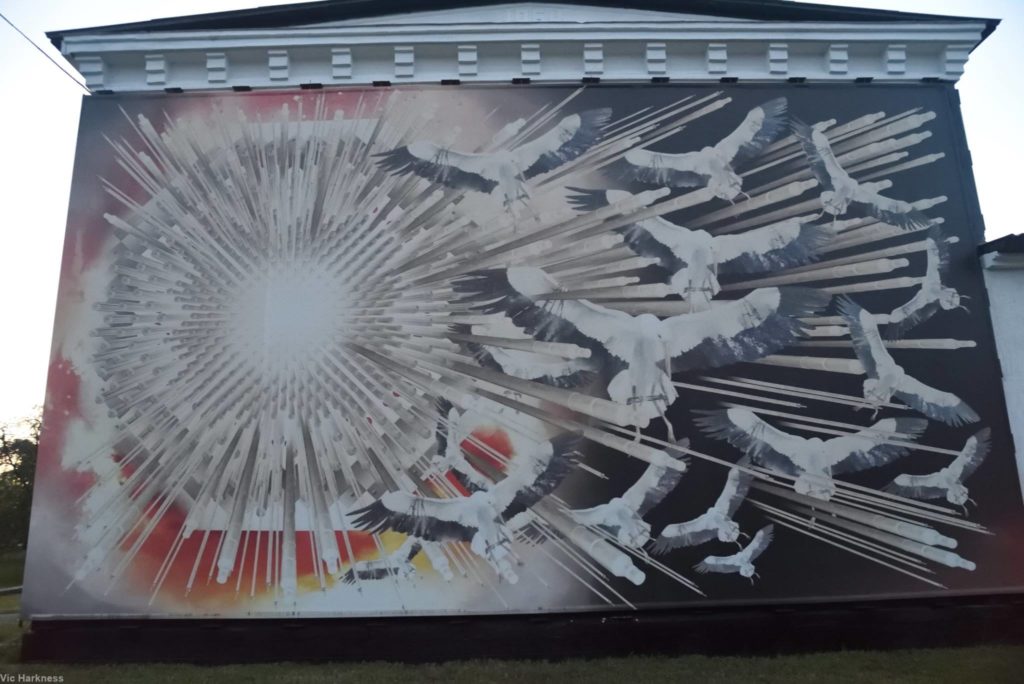
Be First to Comment